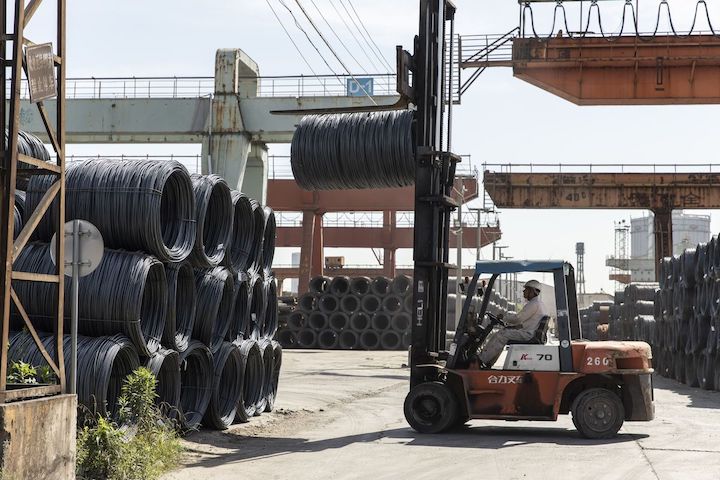China is considering imposing more tariffs on steel exports as it seeks to achieve twin goals of capping domestic production and taming the surging prices that have fanned concerns about inflation. Futures dropped.
Potential rates being discussed range from 10% to 25% and products include hot-rolled coil, according to two people familiar with the matter, who asked not to be identified because they’re not authorized to speak to the media. Officials are seeking to implement the levies in the third quarter, though they’re still subject to final approval, one of the people said.

China’s customs agency didn’t immediately respond to a fax seeking comment on the plans. Hot-rolled coil fell 0.8%, while rebar also declined and Chinese iron ore futures dropped 2%.
“The message this sends the market is that moral hazard exists among Chinese flat steel producers, who might be tempted to ignore government mandates given extremely wide margins,” said Atilla Widnell, managing director at Navigate Commodities. We expect any flat-rolled steel exporters in China would be able to cope with a tariff of up to 20%, though it would hurt smaller, higher marginal cost producers, he said.
China is the biggest steel exporter and is undertaking an industrial overhaul that’s seen it vow to reduce output in 2021 to curb carbon emissions from one of its dirtiest industries. The move to concentrate on domestic supply comes after resurgent demand lifted prices to a record earlier this year, and may tighten global markets that are seeing a steel boom as economies navigate their recovery from the pandemic.
Markets outside of China are enjoying the greatest steel rally in a generation, with prices in Europe and North America toppling records as governments focus on stimulus and infrastructure spending. Plants are straining to boost supply after laying dormant during the pandemic, and Western producers aren’t keen to expand capacity after weathering years of low prices and painful shutdowns.
In China, authorities have implemented a swath of output curbs as part of a net-zero drive. But the result has been a surge in production in the first half—it’s on track to take out last year’s all-time high—on concerns restrictions would be escalated and create a scarcity of supply. That fueled a surge in steel prices, making it attractive for mills to keep churning out vast quantities, and coincided with robust demand as manufacturing and construction ramped up.
“If the measures are implemented, it will inevitably weaken the enthusiasm for exports,” said Ban Peng, analyst at Maike Futures Co. “But it might not be adequate to fill the potential deficit created by the expected crude steel output cuts in China in the second half, domestic prices will remain on the strong side for rest of the year.”
While there were some initial signs of success from authorities’ multi-faceted campaign to rein in commodity prices, steel futures have renewed their climb back toward a record and gains in other raw materials have highlighted ongoing inflationary pressure that risks derailing its economic rebound.
Exports are also showing signs of picking up. After a more than 30% slump in May as the earlier round of levies took effect, China’s steel exports jumped more than 20% in June. The country isn’t alone in its domestic focus. Major supplier Russia plans temporary taxes on exports of steel and some base metals to help cool domestic inflation.
“While some opportunistic Chinese suppliers may raise export prices as a result, foreign buyers must either stump up or source competitively priced material elsewhere,” Widnell said.









